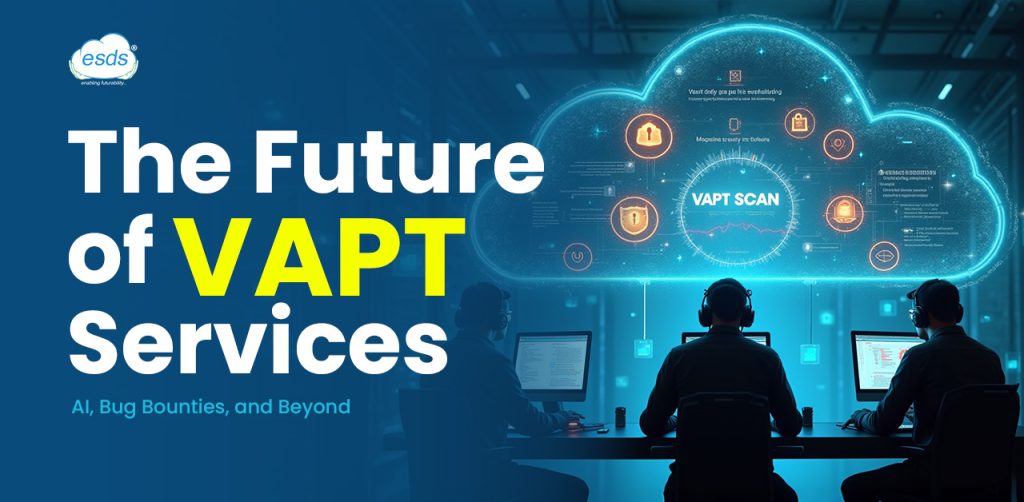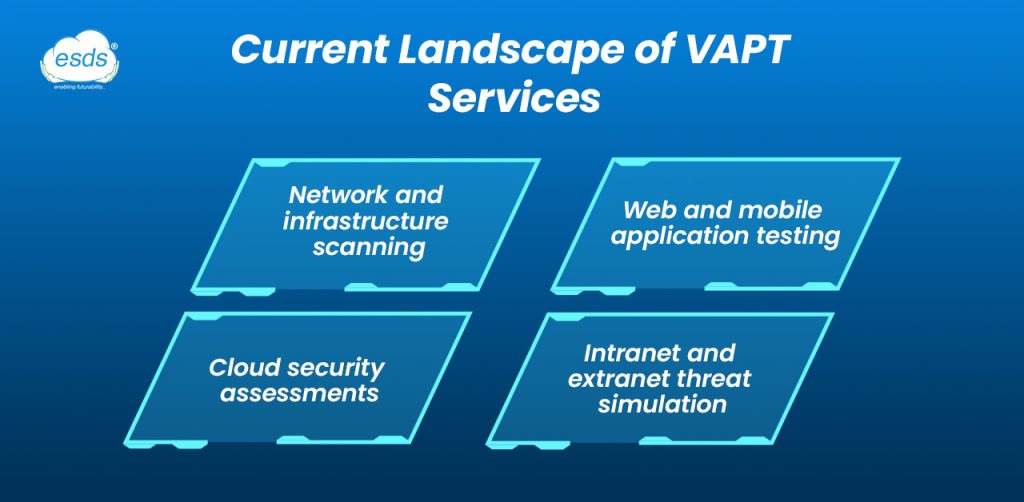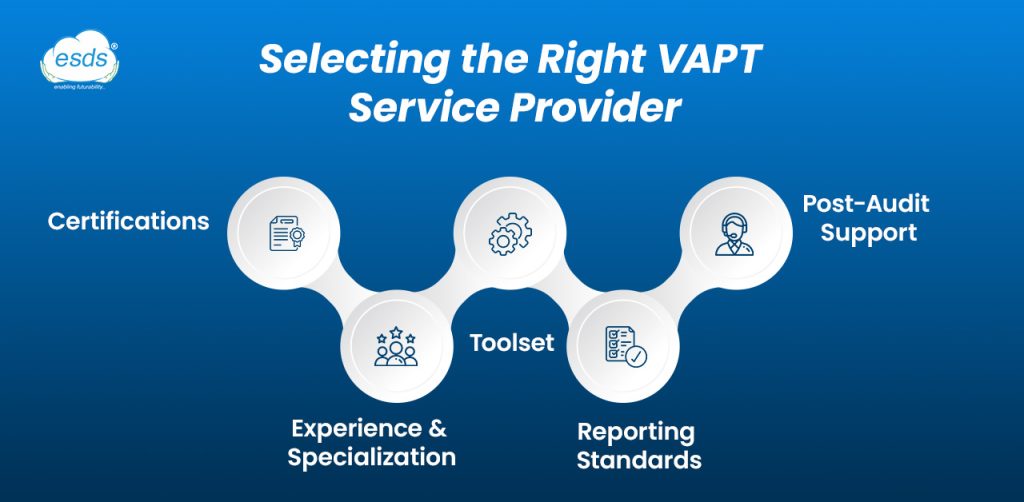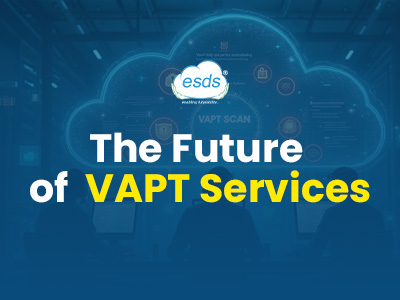The Future of VAPT Services: AI, Bug Bounties, and Beyond

In the face of increasingly sophisticated cyber threats, organizations are increasingly constrained to bolster their security posture and protect their critical digital assets. With businesses swiftly undergoing digital transformation, the urgency for businesses to implement proactive and resilient cybersecurity frameworks has never been higher. Vulnerability Assessment and Penetration Testing (VAPT) is an important part of the cybersecurity landscape, as it has the ability to help organizations identify the loopholes in their security before their vulnerabilities are attacked. With the introduction of artificial intelligence (AI) to revolutionize the threat detection process and increasingly reliant on community-led approaches like bug bounty programs, VAPT services are evolving beyond the traditional boundaries towards a more agile and predictive form of cybersecurity.
What is VAPT?
Vulnerability Assessment and Penetration Testing (VAPT) is a two-component process designed to identify and remediate security vulnerabilities in IT infrastructure. Vulnerability assessments are informed through the extraction of known vulnerabilities with automation, while penetration testing simulates real vulnerabilities in order to exploit those vulnerabilities. While traditional security audits typically rely on a compliance checklist, a VAPT audit is more dynamic and situationally aware. Many traditional security audits may uncover vulnerabilities, but they do not gauge the true risk of the vulnerability.
Current Landscape of VAPT Services

VAPT audit services today are the need of the hour for any organization dealing with sensitive information, like banking, healthcare, e-commerce, and government departments. These services include:
- Network and infrastructure scanning
- Web and mobile application testing
- Cloud security assessments
- Intranet and extranet threat simulation
A proper VAPT service provider in India would perform these scans using automated scanning tools as well as through manual methods in order to achieve complete coverage. The process is as follows:
- Information Gathering
- Vulnerability Scanning
- Exploitation (Penetration Testing)
- Reporting
- Remediation Support
Top-tier VAPT testing services also provide retesting options post-patch implementation to ensure vulnerabilities have been successfully resolved.
Rising Trends Shaping the Future of VAPT
The threat landscape is no longer linear, and neither can the response mechanisms be. Some of the latest trends revolutionizing VAPT services are as follows:
a. Artificial Intelligence in VAPT
AI is transforming security scans. conventional VAPT methods are time-consuming, labor-intensive, and reliant on human ability. With AI and ML, VAPT tools are getting intelligent, lightning-fast, and predictive.
Some of the most significant benefits of AI in VAPT are
- Scanning & Analysis Automation: AI can make scanning and reconnaissance activities automated, reducing detection time for vulnerabilities to a large extent.
- Predictive Threat Modeling: Machine learning algorithms can detect patterns and forecast attack vectors beforehand.
- Adaptive Testing: AI has the capability to learn from previous tests in order to create improved tests in the future with increased accuracy with the passage of time.
b. Bug Bounty Programs
Crowdsourced bug bounty programs are increasingly popular across the globe as firms tap into the worldwide talent pool of qualified ethical hackers. Bug bounty programs encourage individual security researchers for the discovery and reporting of real-world vulnerabilities.
How bug bounties supplement VAPT:
- Diverse Expertise: Regardless of how competent your in-house team is, crowdsourcing brings different perspectives.
- Deeper Testing: Bounty hunters are being paid to do so, so they’ll test more thoroughly than conventional testing procedures.
- Cost-Effective: The Pay-per-vulnerability model only costs for actual findings.
HackerOne and Bugcrowd platforms already are in the mainstream and are employed as an added layer along with VAPT audit services as a complementary coverage.
c. Continuous VAPT vs Periodic Testing
Cyber threats change every day, and thus should your testing model. Rather than having VAPT audits conducted quarterly or yearly, organizations are adopting continuous testing models.
Continuous VAPT testing services involve
- Integration with CI/CD pipelines
- Real-time detection of vulnerabilities
- Continuous monitoring and alerting
This change is such that no new code or infrastructure modification remains untested, thus reducing attack surfaces in real time.
Selecting the Right VAPT Service Provider

While demand grows, the number of VAPT service providers in India also grows. Not all of them are equal, however. These are some important considerations in selecting a partner:
- Certifications: Ensure providers have certifications such as ISO 27001, CREST, CEH, or OSCP.
- Experience & Specialization: Select vendors who have a proven record of industry-specific experience.
- Toolset: Make sure they utilize a combination of proprietary and open-source tools such as Nessus, Burp Suite, and Metasploit.
- Reporting Standards: Request reports that are in detail with risk scores, proof-of-concept, and remediation advice.
- Post-Audit Support: The good VAPT vendor should assist you in the process of patching and provide retesting
Regulatory Compliance and VAPT
Governments and regulatory authorities across the globe are moving towards data protection and security compliance. In India, legislation like the Digital Personal Data Protection Act (DPDP 2023) and CERT-In guidelines has compelled businesses to provide VAPT audit services to industries like BFSI and healthcare.
Global standards like
- ISO 27001
- PCI-DSS
- GDPR
- HIPAA
often requires proof of VAPT testing services as part of the security validation process.
Adherence to these standards might invite legal trouble, loss of reputation, and money.
Future Challenges and Opportunities
Despite the bright future of VAPT, it also has challenges:
Challenges
- Skills Shortage: According to the (ISC)² Cybersecurity Workforce Study, the world lacks 4 million cybersecurity experts
- Evolving Threats: Hackers are also employing AI, rendering it futile to use manual or conventional VAPT techniques.
- Tool Overload: Too many tools without integration results in inefficiency in the operation.
Opportunities
- Productization of VAPT Services: Subscription and as-a-service models for VAPT will pick up speed.
- Indigenous Growth in India: With the government’s Digital India and Make in India initiatives, indigenous VAPT service providers in India have a massive opportunity to grow.
- Integration with DevSecOps: VAPT is becoming a part of the CI/CD pipeline, which enables secure software development lifecycles.
Conclusion
Given the constantly shifting threat landscape of the digital world, organizations need to up their cybersecurity offerings to address contemporary challenges. At ESDS, we’re of the view that security is not an option—whether it’s a checkbox—it’s an ongoing dynamic process.
With the help of AI-powered tools, industry best practices, and a pool of certified cybersecurity professionals, ESDS provides smart, adaptive, and elastic VAPT testing solutions according to your business requirements. We take you beyond run-of-the-mill testing by integrating security into your development cycle and assisting you in getting compliant with regulatory frameworks such as ISO 27001-2022, PCI-DSS 4.0 compliance, and General Data Protection Regulation.
ESDS aims to enable organizations to remain robust against dynamic cyber threats by continuously monitoring, providing actionable insights, and offering end-to-end remediation assistance.
Disclaimer
“ESDS Software Solution Limited is proposing, subject to receipt of requisite approvals, market conditions and other considerations, to make an initial public offer of its equity shares and has filed a draft red herring prospectus (“DRHP”) with the Securities and Exchange Board of India (“SEBI”) that is available on the website of the Company at https://www.esds.co.in/, the website of SEBI at www.sebi.gov.in as well as on the websites of the book running lead managers, DAM Capital Advisors Limited at https://www.damcapital.in/ and Systematix Corporate Services Limited at http://www.systematixgroup.in/ The website of the National Stock Exchange of India Limited at www.nseindia.com and the website of the BSE Limited at www.bseindia.com, respectively. Investors should note that investment in equity shares involves a high degree of risk. For details, potential investors should refer to the RHP which may be filed with the Registrar of Companies, Maharashtra, at Mumbai, in the future, including the section titled “Risk Factors.” Potential investors should not rely on the DRHP filed with SEBI in making any investment decision.”
- Why the BFSI Industry Needs GPUaaS Now - October 31, 2025
- The Future of VAPT Services: AI, Bug Bounties, and Beyond - June 20, 2025
- Government Community Cloud: The Backbone of Modern Public Infrastructure - April 7, 2025
